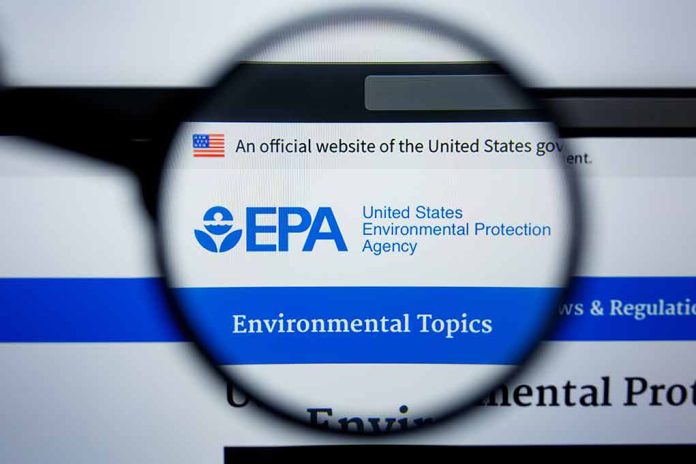
Could the elimination of the EPA’s scientific research division signal a tipping point in environmental regulation and job security?
Key Takeaways
- The EPA plans to eliminate its scientific research arm, potentially leading to over 1,000 job losses.
- This is part of a larger federal workforce reduction strategy under the Trump administration.
- EPA Administrator Lee Zeldin proposes a budget cut impacting various critical environmental programs.
- The plan could dissolve the EPA’s Office of Research and Development and reassign remaining staff.
- Environmental groups and some lawmakers are urging Congress to intervene.
Job Security and Efficacy of Environmental Regulation
The Environmental Protection Agency (EPA) is considering a plan that would drastically reshape its internal structure by eliminating its scientific research division. More than 1,000 employees, including scientists and support staff, face potential layoffs. The agency’s ability to enforce the left’s excessive environmental regulations may be jeopardized, affecting laws designed to protect both ecosystem health and public safety. The strategic downsizing aligns with broader federal workforce reduction efforts under the Trump administration.
Liberal critics argue that this decision could dismantle the backbone of evidence-driven policy formulation, impacting areas such as clean water and wastewater management, air quality monitoring, and toxic site cleanups. Conservative-minded Americans, on the other hand, see this move as a necessary step to eliminate wasteful federal spending and excessive regulation. EPA Administrator Lee Zeldin’s proposal includes a 65% cut to the agency’s budget. As the proposed changes await White House review, the dissolution of the Office of Research and Development represents a significant shift in the agency’s priorities.
Implications of Structural Changes
California Representative Zoe Lofgren criticizes the move, suggesting it undermines the EPA’s mission by prioritizing “polluters” over public health and safety. Lofgren asserts, “EPA cannot meet its legal obligation to use the best available science without (the Office of Research and Development) and that’s the point,” she claims, highlighting the risk of compromising scientific integrity in policy development. Environmental groups echo these concerns, advocating for congressional intervention.
The administration, however, emphasizes a different perspective. EPA spokeswoman Molly Vaseliou explained the agency’s effort to make operations more efficient: “While no decisions have been made yet, we are actively listening to employees at all levels to gather ideas on how to increase efficiency and ensure the E.P.A. is as up to date and effective as ever.” The administration seeks to realign staff with its strategic priorities, possibly relegating scientific roles to secondary status.
Future Trajectory of Environmental Strategies
As discussions continue, scrutiny grows on the potential elimination of the EPA’s scientific backbone. With spending over $50,000 now requiring approval by Elon Musk’s Department of Government Efficiency, critics argue that environmental oversight could be compromised. Molly Vaseliou assured, “We are committed to enhancing our ability to deliver clean air, water, and land for all Americans,” yet uncertainties remain around the structural overhaul’s implications for both EPA employees and environmental regulation.
Calls from lawmakers and environmental groups highlight the urgency of protecting scientific integrity within EPA operations. The situation poses fundamental questions regarding the agency’s role in safeguarding public health and environmental standards amidst a significant potential restructuring.
Sources:
- EPA considers eliminating its science arm
- Trump Administration Aims to Eliminate E.P.A.’s Scientific Research Arm – The New York Times
- EPA plans to eliminate scientific research team, could fire more than 1,000 employees



